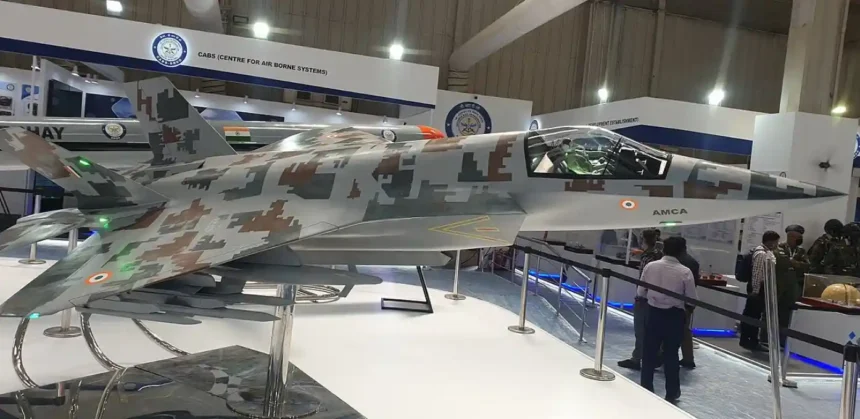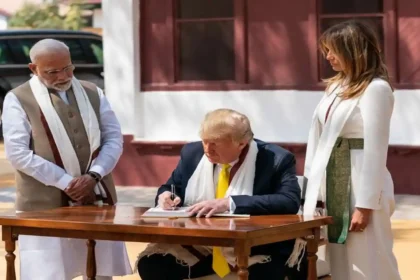Bengaluru, July 27, 2025 – India’s plans for its own fifth-generation stealth fighter, the Advanced Medium Combat Aircraft (AMCA), are moving forward, with a key milestone set for 2027. That’s when the first full-scale structural test specimen—an engineering model that doesn’t fly but is used for all sorts of ground-based checks—is expected to be ready. This moves India one step closer to becoming only the fourth country in the world with a homemade fifth-gen stealth jet.
What Is the AMCA?
The AMCA is designed to be a twin-engine, single-seat fighter loaded with new tech for stealth and deep-strike missions. Developed by the Aeronautical Development Agency (ADA) alongside Hindustan Aeronautics Limited (HAL) and private partners, the jet will feature:
- Low radar visibility: Shape, special materials, and hidden weapons bays to dodge enemy radar.
- AI-driven avionics: Built-in AI for pilot assistance and sensor fusion, blending inputs for quick decisions.
- Supercruise: Ability to fly at supersonic speeds without afterburners, saving fuel and reducing heat.
- Modern weapons: Space for air-to-air and air-to-ground missiles, and up to 1,500kg in the internal bay.
- Strong composites: Nearly 40% of its body made from light-yet-tough composite materials for both strength and stealth.
The goal is to have it replace older fighters like the Su-30MKI in the Indian Air Force down the line, joining the Tejas as another mainstay.
Why the Structural Test Specimen in 2027 is Key
The test specimen is a full-size model of the jet, meant for static and dynamic load testing, not flying. Engineers load it up—sometimes until it breaks—to check safety margins, fatigue, and how new materials and shapes hold up against years of use. Sensors measure every flex and strain. Passing these tests means the actual flying prototypes will be much safer and ready for flight trials.
Groundwork to build this test article is already underway, according to official updates from ADA and defence news sites. Key timelines include:
Indigenous Drive and Next Steps
Making the AMCA is part of India’s big push to build defence gear locally. The Cabinet cleared over ₹15,000 crore for five complete prototypes, with a public-private partnership drawing in private aerospace firms. HAL has gone public with the search for manufacturing partners, and expressions of interest are currently being accepted.
The engine for the first batch will be a GE-F414 (from the US), but future variants are aiming for a new Indian-French co-designed powerplant with even more thrust.
What Comes Next
After the structural test article aces its checks, flying prototypes will be tested for aerodynamics, stealth, and weapons systems through the late 2020s and early 2030s. With India joining the US, Russia, and China in this elite group, the AMCA highlights a new chapter in India’s aerospace journey.







